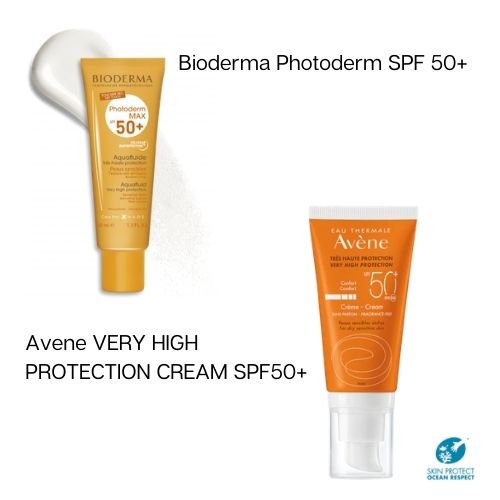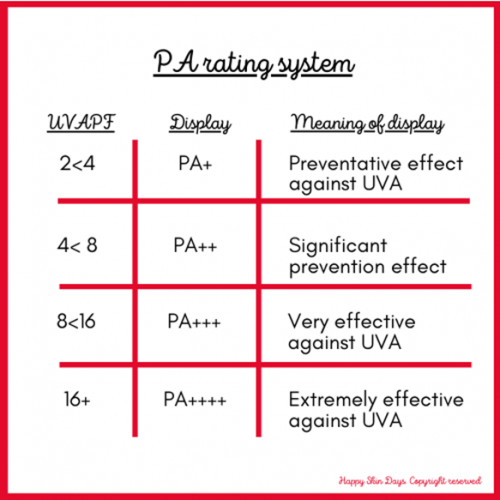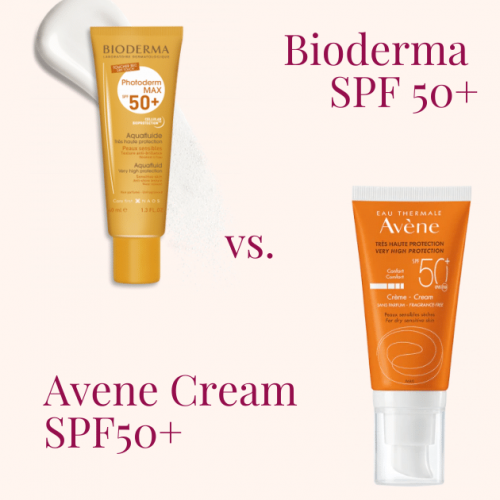A reader recently asked me if Bioderma Photoderm SPF 50+ or Avene very high protection cream SPF 50+ offered higher protection against UVA radiation. After all, “Bioderma had a PPD of 42” and surely that was higher.
All I have to go by is the ingredient label of Avene and Bioderma (as published on their respective websites) and it is genuinely impossible outside a lab to measure the UVA protection offered by a sunscreen.
I can offer to do the next best thing and look at the order of ingredients on a product list and form a hypothesis about potential protection against UVA
Anyone who claims that they can do otherwise and is not using the relevant ISO to measure protection against UVA, you should be more than sceptical about. The two ISOs are:
- ISO 24442 (2011) In vivo determination of sunscreen UVA protection
- ISO 24443 (2012) Determination of sunscreen UVA photoprotection in vitro
Two products are….

What is PPD?
I will refer you to the blog “What is PA+++?” for more information
Briefly…
- UV radiation comprises of UVB (which is what SPF specifically protects against) and UVA. About 95% of UVR reaching us is UVA1.
- Measuring UVA protection of a sunscreen is centred around Pigmentation.
- PPD (or Persistent Pigmentation Darkening) is the skin darkening that persists 2 hours to 24 hours after the end of UVA exposure.
- In 1995, the Japanese Cosmetic Industry Association (JCIA), developed a UVA protection factor (UVA-PF) using only Persistent Pigment Darkening (PPD) as the biological endpoint. This original PPD method was like the SPF test, but only used UVA radiation for the exposure source and the minimal dose for PPD as the biological endpoint was what was being measured. The results of UVAPF allowed sunscreen manufacturers to display the following labels on their products:

But Made in Europe sunscreens DO NOT display a PPD rating….
Avene and Bioderma are Made in Europe sunscreens and under EU rules, they have to comply with these requirements for UVA:
- At least one-third of the stipulated SPF must be contributing to protection against UVA radiation
- The critical wavelength test of 370nm must be passed.
See this blog for more information
What do I think?
I don’t like using PPD because brands are not required to display this in their labelling, especially European and American sunscreens.
PPD is a very Asian sunscreen thing: and quite frankly, the whole scandal with Purito Centella sunscreen (where the measured sun protection by independent lab was SPF 19 vs company’s claim of SPF 84) restores my faith in Made in Europe sunscreens over South Korean sunscreens.
(Purito Centella have recalled most sunscreens. See this announcement).
Also, please remember that getting the best out of your sunscreen requires constant repplication AND application of the correct amount. Trying to find the highest PPD product is fine, but YOU must follow aforementioned guidelines.
What are the ingredients like?
The Ingredient labels are helpfully published on each product’s home website.

Filters present in Bioderma SPF 50+
These are: Octocrylene, (3rd ingredient), MBBT (5th ingredient), Avobenzone (6th ingredient), BEMT (8th ingredient)
Filters present in Avene SPF 50+
These are: MBBT (4th ingredient), BEMT (7th), Diethylhexyl butamido triazone (8th), Avobenzone (11th)
The difference in the positioning of Avobenzone allows me to conclude that the Bioderma sunscreen is relying on Avobenzone for UVA protection: for the Avene sunscreen, the 11th position on the ingredient list of Avobenzone indicates it kind of is not…
Using a sunscreen filter to model purported protection…
Assuming the best case scenario in both cases and that each UV filter is present in the maximum amount permitted by EU law and by parameters of ingredient list, the UV absorbance for Bioderma and Avene look like this…
As I have modelled it, Avene provides marginally better protection than Bioderma because the former is not relying on Avobenzone for UVA protection. My spiel on Avobenzone is this:

Assumptions about quantity of filters:
- Bioderma: Octocrylene 10%, MBBT (nano) at 8%, Avobenzone (6%) and BEMT (4%)
- Avene: MBBT (nano) at 10%, BEMT at 8%, DHHB at 6%, Avobenzone (4%)
What should your main takeaway be from this complicated blog?
If you are buying European sunscreens, especially French pharmacy brands like Avene and Bioderma, that:
- these brands are very likely to be fully compliant with EU regulation on this area. Why wouldn’t they be? Its their reputation on the line..
- Don’t obsess over PPD for such sunscreens: applying the correct amount with greater frequency is key to protection against UVA damage.
See also:
HAPPY SKIN DAYS. COPYRIGHT RESERVED 2021. I am a non-affiliated skincare blogger. I invest my own resources in researching and creating content for my blog. The contents of this blog, including images are protected by copyright law(s). My content cannot be replicated without my consent. You can write to me at email@happyskindays.com. I will file criminal and civil charges for copyright infringement.
